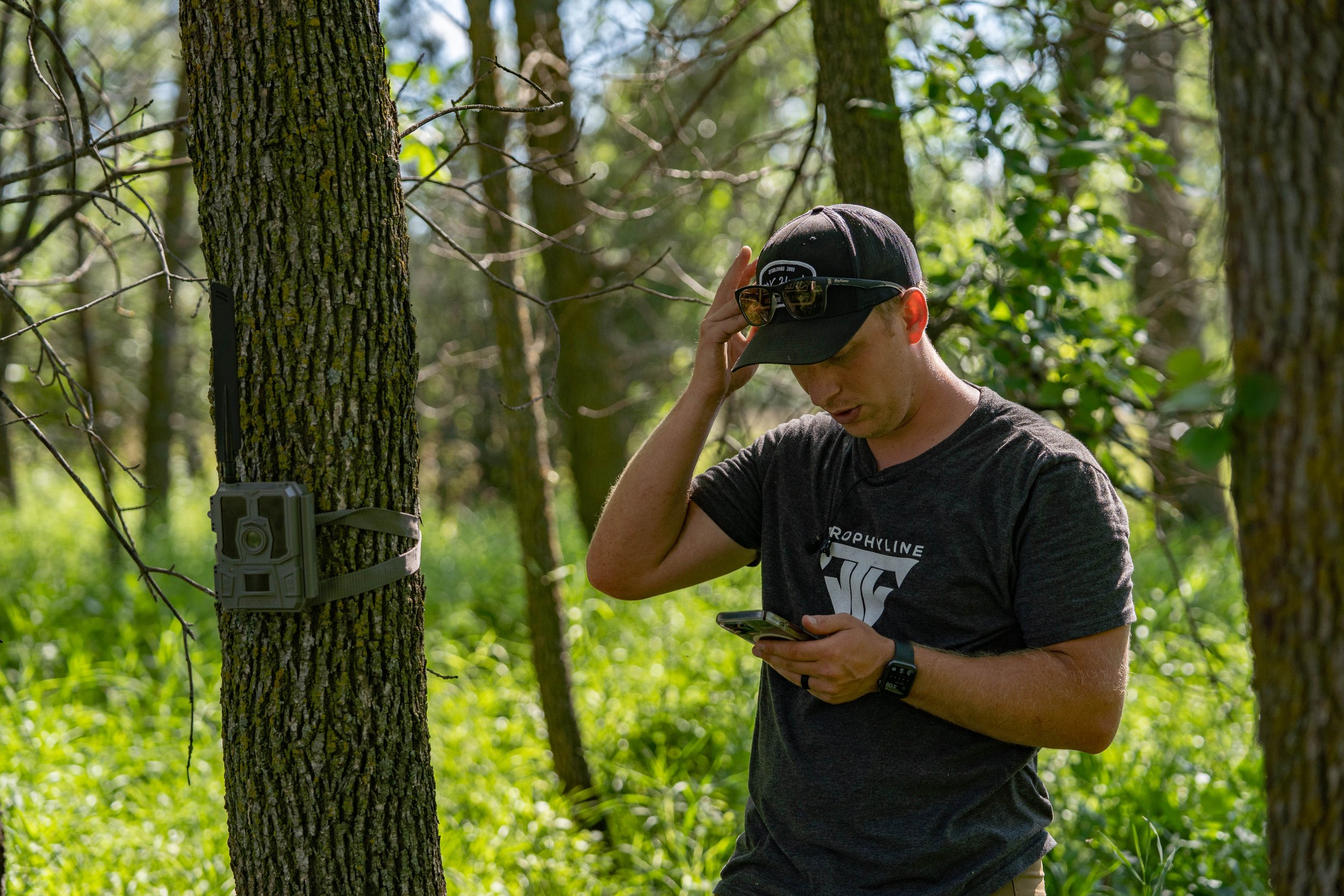By Alex Comstock
I'm currently trying to locate a big woods buck this summer to hunt in the fall, and after only checking a single trail camera once, it hasn't happened yet. There's still a lot of time for it to happen, but today I wanted to briefly talk about what it really can mean to you when you locate a mature buck when hunting in a big woods setting.
When Will You Be Hunting?
The first question that has to be answered is when you'll be hunting. I'll use my current situation to illustrate this point. My season doesn't open until mid-September and there aren't any defined food sources in the area (i.e. crops, etc.). Deer can be pretty much anywhere in the summer, find food wherever they want, and there's ample bedding. It's much different from than say where I hunt in North Dakota where in the summer, even though there's still a lot of places for bucks to hide, their movement is a little more defined. They have more consistent feeding areas, whether that be in bean fields or some other type of agriculture.
When it comes to the situation in my home state of Minnesota, given all of these facts, if I locate a mature buck in the summer, it will more or less mean one thing to me, and that's inventory. I want to know what deer are living in a generalized area. Once I do that, come September, October and November, I can hunt based off other factors knowing what bucks might be in the area.
Now, when this can change is if you do have an early opener, and can get a pattern on a buck. Maybe you've got an acorn flat dropping, opening day is in early September, and you can make a plan. Mature bucks are susceptible very early in the year, but once it gets into late September and into October, bucks can shift home ranges, not move as far in daylight and be very difficult to find. This can especially be true in a big woods environment.
How Does a Mature Buck Move Throughout The Year?
Hunting the big woods can be so unique. Depending on where you locate a mature buck in the summer, there can be multiple ways to process the information. Unlike agricultural country where you can better predict where a buck will move to once the crops come out, a big woods deer can be much more unpredictable. I find it very important to spend a lot of time figuring out and understanding how your hunting property lays out. Scrutinize every little piece of it. Whether that be how bucks will be moving because of terrain features or swamps, etc. really try and learn how deer will use the property in the fall. Once you do that, you can use the information you collect in the summer much more effectively. You'll have a better idea of not only what bucks are around, but the quality of deer, age structure, etc.
So What Does Locating a Big Woods Buck in The Summer Really Mean?
It all depends. I know, not the answer you were probably looking for, but it's the truth. Every situation is different, and I've still got a lot to learn about hunting mature bucks in the big woods. I think a lot of people can relate to this though, and it can be very challenging to connect on a mature buck in the big woods. It all has to start somewhere though, and right now might be that time for you.
Note that we'll be doing some Q&A's this year with big woods hunting experts, so be on the lookout for those!































